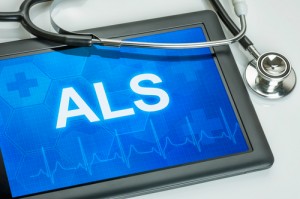Crowdsourcing Contest Seeks Algorithms for ALS Therapy Improvement

 Investigators from the Helmholtz Zentrum München and Ludwig-Maximilians-Universität München in Germany are organizing a crowd sourcing exercise as a way of determining new algorithms that they expect will be able to accelerate their research into treatment for amyotrophic lateral sclerosis (ALS). The challenge itself, as well as the most effective algorithms found, were recently published in the Nature Biotechnology journal.
Investigators from the Helmholtz Zentrum München and Ludwig-Maximilians-Universität München in Germany are organizing a crowd sourcing exercise as a way of determining new algorithms that they expect will be able to accelerate their research into treatment for amyotrophic lateral sclerosis (ALS). The challenge itself, as well as the most effective algorithms found, were recently published in the Nature Biotechnology journal.
An international team of researchers, which included bioinformaticians, started developing new ideas to improve research on ALS and initiated Prize4Life, an IBM DREAM project, and pharmaceutical companies who in turn engaged in crowdsourcing. Participants were asked to create new algorithms able to accurately and individually predict the course of the disease based on defined clinical tests. As a result, the algorithms are based on computer-assisted procedures, as well as on databases, and the investigators believe they will enable physicians to improve diagnosis and better predict the progression of the disease.
The procedure is also based on datasets of large populations, in which physicians can register to gain access to anonymized clinical data of 1,822 ALS patients, beginning from their first 3 months after diagnosis. The competitors in the crowdsourcing challenge gain automatic access to it, and were asked to design algorithms that predict the disease nine months after the diagnosis for each patient. In addition, the algorithms were evaluated and compared in order to understand the actual state of the patients.
“The two best algorithms outperformed the models used so far, and were substantially more reliable than the doctors’ assessments,” said Robert Küffner, from the Research Unit in Bioinformatics at LMU’s Institute of Informatics, and affiliated at the Institute of Bioinformatics and Systems Biology at Helmholtz Zentrum München. “These results will enable us to improve the design of future clinical studies. If the expected course of the disease can be confidently predicted for each patient, it becomes much easier to evaluate the effects of candidate drugs.”
[adrotate group=”3″]
The competitors were also asked to identify clinical parameters, which were not until now considered, including blood pressure, blood levels of uric acid, and creatinine, and are now taken into consideration as useful indicators in the context of the rate of disease progression. “The results demonstrate the great potential of the crowd-sourcing approach for advancing research on ALS,” added Küffner, who serves as technical coordinator of the challenge.
The data used for the contest came from several clinical trials, such as research projects on blood composition and assessments of motor function. “The problem is that these data are quite complex and also non-uniform, because they were measured by different laboratories,” the researcher said. However, the data was harmonized in order to minimize the variations and its effects before the contestants began their work.
“Many of the contributors had had no previous experience with ALS, but their methods can be applied to clinical data. Crowd-sourcing thus opens up entirely new perspectives for clinical research, and can certainly help to identify the most powerful algorithms,” said Küffner, as he explained that the two winners of the competition had never been used in a clinical context, but were the more reliable predictive algorithms.
A total of 37 algorithms were submitted to contest and the best one was awarded 50,000 euros, supported by the ALS initiative Prize4Life, which created the Open Access Database ALS Clinical Trials, in collaboration with the Neurological Clinical Research Institute at Massachusetts General Hospital. “This larger dataset will give us a better understanding of ALS and the factors that determine its clinical course,” says Küffner, who is already organizing a second crowd sourcing challenge, while the clinical data from the first one already included a total of 8,600 patients.
“The variation in disease progression makes it very difficult to develop effective treatment strategies,” explained Küffner about ALS, a neurodegenerative and life-threatening disease that affects the nerve cells, which are responsible for the movements of voluntary muscles. Symptoms include muscular dystrophy, loss of mobility, or even complete paralysis, as well as difficulties in speaking, swallowing and breathing.






